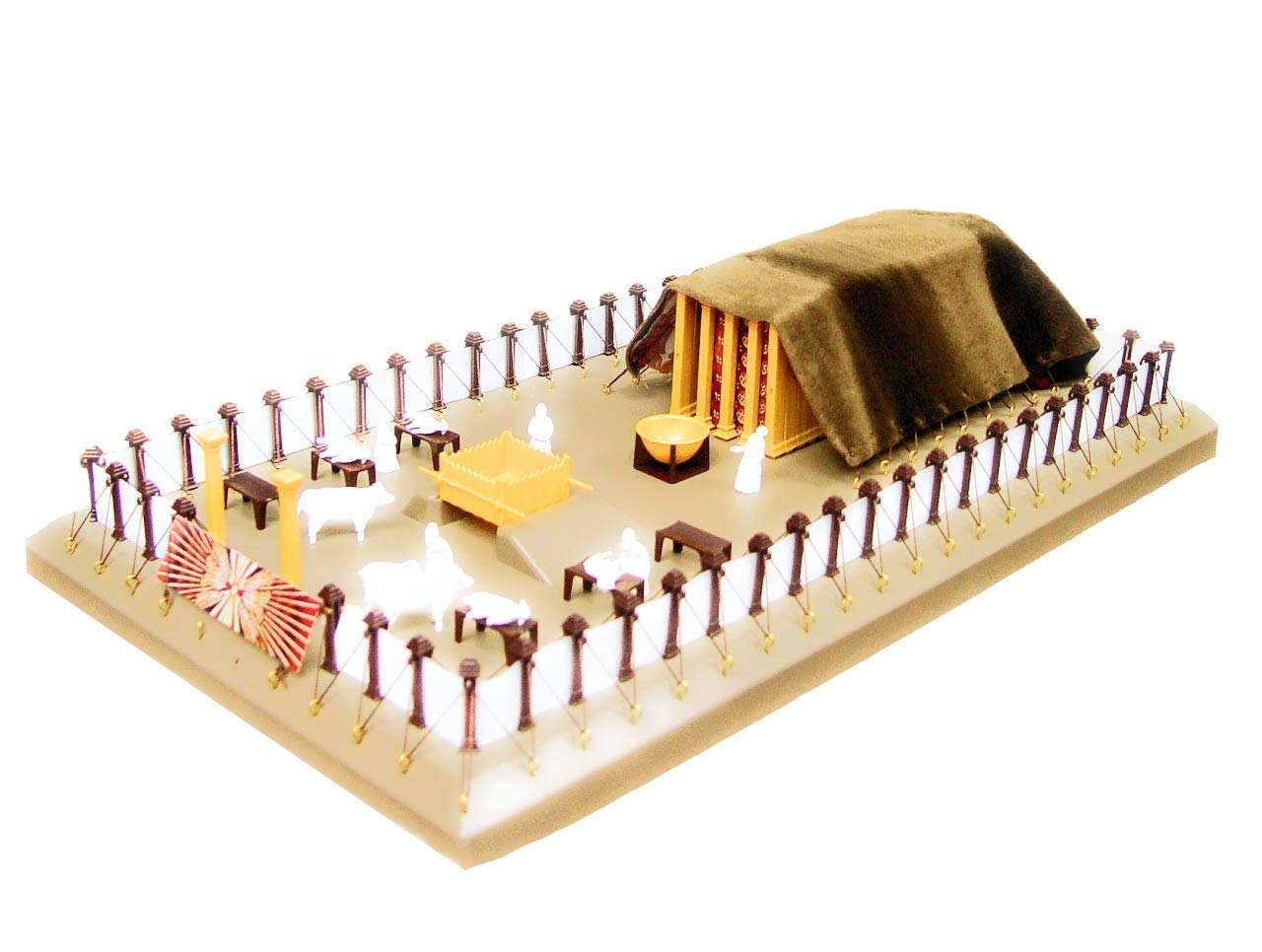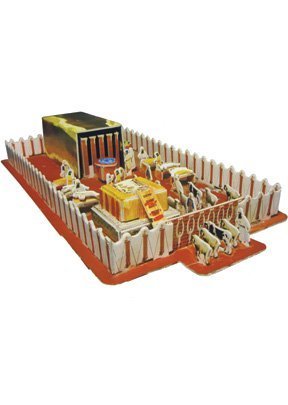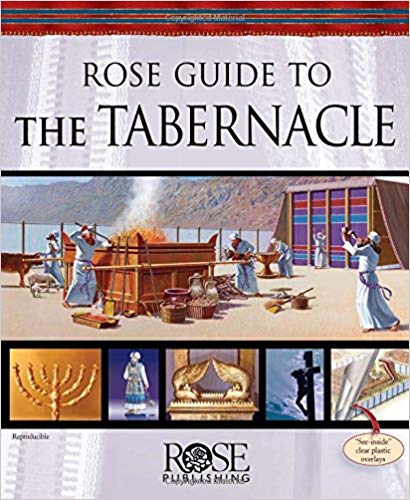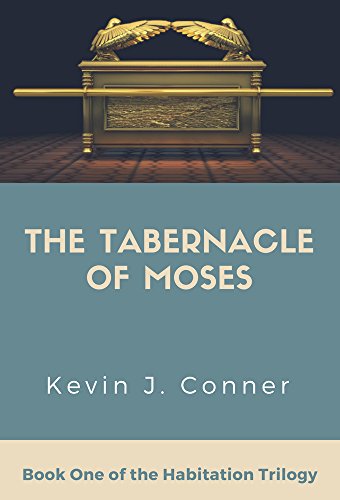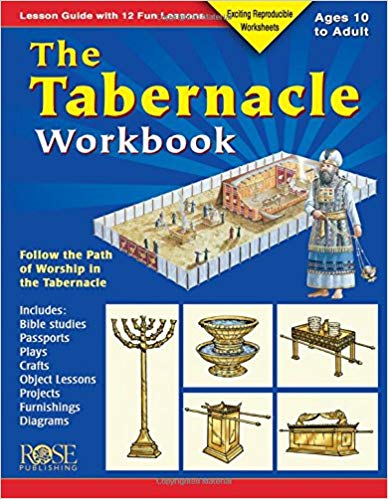The Israelites, after they left Egypt, spent forty years wandering in the wilderness. After the first two years of wandering, God gave them plans for exactly what He wanted them to build for a worship place, and they followed His instructions to the letter. The people gave of what they had for the metals, jewelry, and cloth used in the process. Bezalel of the tribe of Judah was the main builder, assisted by Aholiab of the tribe of Dan, and several artisans skilled in metalwork and other arts aided in the construction.
This was the first time that God met the Hebrews in a structure rather than simply at an altar.
The tabernacle took up a space about 150’ long and 75’ wide, including the outer court. It sat in the middle of the camp, with the tribes arranged according to God’s assignments around it. The instructions for building the tabernacle were given to Moses during a meeting with God on Mount Sinai, according to Exodus chapter 24.
It consisted of three parts. Each had certain There were certain rules in place that determined who could enter each part of the tabernacle.
1. The Outer Court
This could be called a courtyard; this area had no roof and had daylight for light. It was surrounded by cloth panels (curtains) that hung from rods set on pillars. This wall was about 7.5 feet tall. These curtains were made of white linen. At the east, there was a gate made of blue, purple, and scarlet linen, which was the only entrance into the tabernacle.
The first thing one met in entering this gate was the brazen altar, where the sacrifices were performed. Anyone who needed to offer a sacrifice were to come to this altar to perform it.
2. The Holy Place
This was the outer area of the enclosed portion and was accessible by any priest. It was about 30 feet long, about 15 feet wide and 15 feet tall. This room was where the priests washed, kept the shewbread, and performed some of the rituals.
3. The Holy of Holies
The Holy of Holies was separated from the Holy Place by a thick tapestry veil, which was held up by four pillars. This is the veil that was torn in two when Jesus died on the cross.
The room was 15 feet in every direction – a perfect cube. God’s glory was the only light in this section of the tabernacle.
Only the high priest was permitted to enter the Holy of Holies, and that only once each year, on the Day of Atonement.
The Levites were in charge of the takedown and setup of the tabernacle each time the Israelites moved from one place to another.
Even after the Israelites arrived in and conquered the Promised Land, the tabernacle was their place of worship for many years.
There were five pieces of furniture inside the tabernacle.
1. The Altar of Incense
This is where the incense was burned. It was housed in the Holy Place. It was two cubits high (about 3 feet) and one cubit square from a top-down view. Made from acacia wood, the altar was gold-plated. It had one horn on each corner on which blood was placed from the sacrifices once a year.
Incense was burned on it each morning and evening as a regular offering to God, and was, in fact, kept burning at all times. The recipe for the incense was very specific. If any other incense was burned on this altar, it was a serious offense – and was the fatal sin committed by Aaron’s sons Nadab and Abihu.
This altar was meant as a symbol of prayer. Believers are expected to pray continually, like the incense was burned continually.
2. The Laver of Brass
In the Outer Court, this basin was filled with water for the priests to wash their hands and feet before entering the Holy Place. After the sacrifice was complete, the priests washed here before entering the Holy place, and also after leaving the holy place. The size of this piece is not known, but we know that it set on a base, and it was made from the brass from the women’s mirrors.
The laver represents Christ, as the cleanser of humankind.
3. The Ark of the Covenant
The only furniture in the Holy of Holies, the Ark of the Covenant was a chest made of wood covered with gold. It was about 45” long, and about 27” wide and high (square). Its lid contained the mercy seat, which was surrounded by cherubim replicas also covered in gold. It had rings in which staves were put for transport. It was where the High Priest offered the blood of the sacrifice yearly.
The Ark of the Covenant is a representation of Christ as the only atonement for the sins of mankind.
4. The Table of Shewbread
Situated in the Holy Place, this was also made of wood and covered with gold. It stood about 2.25 feet tall and was about 3 feet long and 1.5 feet wide. It had twelve loaves of bread on it which were replaced weekly with fresh; they represented the twelve tribes of Israel. Each week when the loaves were replaced, the old loaves were eaten by the priests. The table was covered with a blue cloth when traveling, with everything normally on it still on it.
This is, again, a representation of Christ – the Bread of Life.
5. The Candlestick
This lamp stand held seven lamps and was the source of light for the Holy Place. It was made of beaten gold. The lamps were filled with oil and were kept lit. There was no other light in this area of the tabernacle.
For further study about the tabernacle, consider resources such as models and books, which can give a clearer picture of the tabernacle and its symbolism.
Model Kit: Tabernacle Model Kit
3D Puzzle: Tabernacle 3D Puzzle
Rose Guide to the Tabernacle: Clear Plastic Overlays and Reproducible Charts
The Tabernacle of Moses (Kindle): The Tabernacle of Moses
The Tabernacle Workbook: Lesson Guide with 12 Fun Lessons


